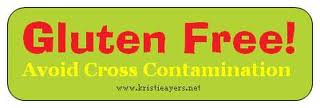Gluten is the protein part of wheat, rye, barley, and other related grains. Some people cannot tolerate gluten when it comes in contact with the small intestine. This condition is known as Celiac disease.
Celiac disease is now clearly known to be genetically determined. In other words, if you or your close relatives have a certain gene, then it is more likely that you will get Celiac disease some time in your life. Of great concern and interest is the fact that nine out of ten people with Celiac disease do not know they have it. A simple blood test can give the physician the first clue to this disease.
In patients with Celiac disease, gluten injures the lining of the small intestine. This injury can result in weight loss, bloating, diarrhea, gas, abdominal cramps, and/or vitamin and mineral deficiencies. When patients totally eliminate gluten from the diet, the lining of the intestine has a chance to heal.
Gut Bacteria
The primary area of injury in celiac disease is the small bowel but there may be a relationship between what happens in the small bowel and the colon or large bowel. There are very large numbers of bacteria in the colon. Most of these are beneficial and actually confer health benefits. When these good bacteria thrive, they suppress the bad bacteria, which are present in the colon. What has been found is that celiac patients, in fact anyone on a gluten-free diet, have an altered make-up of bacteria in the colon which favors the unwanted bacteria.Prebiotic Plant Fiber
A prebiotic is not a probiotic, which are beneficial bacteria taken by mouth. These probiotics are present in yogurt, other dairy products and pills. Prebiotics, on the other hand, are the necessary plant fibers that contain both oligofructose and inulin. These two fibers are the main nourishment for the good bacteria that residein the gut. These fibers are rich in chicory root, Jerusalem artichoke, leeks, asparagus and others.
Benefits Of Going Gluten Free
Basing your diet off of the gluten-free phenomenon can be genuinely healthy and may benefit your cholesterol levels, digestion, and energy level. You don’t have to worry about the little things like soy sauce and malt flavorings, but if you avoid the major red flags in the gluten-free diet, you just might start to feel healthier. For example, you would have to avoid everything that’s fried because of the breading, which would allow you to avoid the oil and fat, as well.
Most desserts would be off-limits, decreasing your sugar and fat intake. However, healthy grains like rice and corn would still be in the mix, giving you the carbohydrates your body needs. With many of the over-processed starches removed from your diet, you’d be likely to start eating more fruits, vegetables, meats, and dairy products in addition to healthy grains. You would also be giving up most fast food (can’t have those buns) except for salads, helping you to avoid even more grease, fat, and oil, but you could keep French fries on the list of deliciously unhealthy foods you would still be allowed to eat. Overall, you would consume less junk food and more fresh food, which is a healthy way for anyone to eat.
Foods to Avoid on Gluten Free Diet
All Regular Cereals, Grains, Flours, Plants & Seeds That Contain Gluten & Should Be Avoided in Alphabetical Order
- Barley - Food and drink containing high levels of malted barley such as malted drinks, beers, ales, lagers and stouts.
- Barley malt extract – This is used to improve the flavor of certain foods and drink. Some experts would advise that it can be consumed if the amount of extract is very small but I would advise not to consume any foods and drinks containing any level to be on the safe side.
- Bulgar – A cereal made from several different wheat recipes.
- Cous cous – Made from semolina wheat and ground wheat flour.
- Durum wheat – Used in many different dishes throughout the world including macaroni, pasta and bread when ground into fine flour.
- Einkorn – Form of wheat which is not heavily used in any western products.
- Emmer – Form of wheat used in pasta and bread and similar to durum wheat.
- Kamut® – Found in many foods such as pastas, breakfast cereals, bread, beer and cookies.
- Pearl Barley – Used in many beers, whiskies and bread.
- Rye - Used in flour and rye bread.
- Semolina – Used in pasta and breakfast cereals.
- Spelt – Used in pasta and as a form of flour.
- Triticale – A genetically made grain that is a cross between wheat and rye.
- Wheat – Widely used to produce pastas, breads, cakes and biscuits.
The list may seem quite a lot to look out when shopping but the Gluten Free Diet is not designed to be a fad diet, it is a serious solution to a serious condition suffered by many people. It’s in your best interest to grow wise to these ingredients in order to help you avoid consuming any of them in your diet. Just remember the smarter you become about what to avoid in your diet the healthier and happier your life will be.
So Many Gluten Free Choices to Enjoy!
So Many Gluten Free Choices to Enjoy!






Thanks for sharing. I hope it will be helpful for too many people that are searching for this topic. Keep posting and keep this forum a great place to learn things.
ReplyDelete